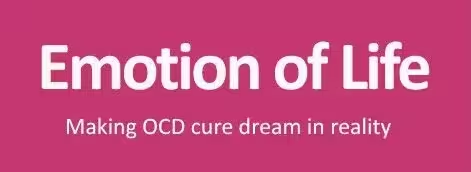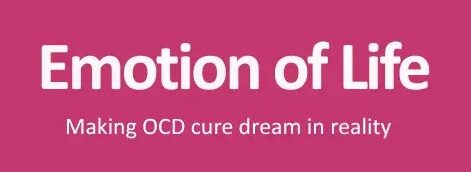OCD in Children can develop at any stage of life, including early childhood. Usual age of developing OCD in Children fall around 12 to 14 years of age. While it was once thought to be uncommon in childhood, recent studies show it can begin as early as the preschool years. Recognizing it early and starting treatment promptly can lead to better outcomes and reduce long-term effects.
What Is OCD in Children/ Childhood OCD?
OCD in Children is a mental health issue characterized by:
- Obsessions: Intrusive, distressing thoughts, images, or urges.
- Compulsions: Repetitive behaviours or mental acts performed to reduce the distress caused by obsessions or to prevent feared events.
In OCD in Children, these symptoms can be diverse and may be mistaken for developmental behaviours, making OCD challenging to recognize.
Common Misconceptions related with OCD in Children
A frequent misunderstanding is that childhood OCD is limited to fears of contamination or a need for cleanliness. While these are common themes, children’s obsessions and compulsions can involve a wide array of issues, such as harm, symmetry, or moral concerns.
Recognizing Symptoms of OCD in Children
Below are key signs that may indicate OCD in Children:
- Obsessive Thoughts: Persistent, unwanted thoughts or fears.
- Repetitive Actions: Behaviours such as checking, counting, or organizing things over and over, often done to ease anxiety or stop obsessive thoughts.
- Fear of Contamination: Avoiding germs or refusing to share objects.
- Need for Symmetry/Order: Insistence on things being “just right.”
- Hoarding: Collecting unnecessary items and resisting discarding them.
- Reassurance-Seeking: OCD in Children usually accompanied by constantly questioning and asking for confirmation or approval from parents and other caregiver.
- Situation Avoidance: OCD in Children situation children deliberately staying away from places or activities that could bring on anxiety or obsessive thoughts.
- Time-Consuming Rituals: in OCD in children, usually children daily routines are disrupted by compulsions.
- Emotional Distress: children with OCD have feelings of guilt, shame, or embarrassment because of these thoughts.
- Relationship Strain: Social and familial interactions are impacted.
Common Obsessions and Compulsions in Children with OCD
- Contamination fears → Excessive washing, avoidance.
- Perfectionism → Repeatedly checking homework or task.
- Symmetry/order → Arranging items precisely.
- Intrusive thoughts → Mental rituals, avoidance.
- Fear of harm → Avoiding perceived dangers.
- Religious/moral concerns → Repetitive praying, confessing.
- Superstitions → Rituals believed to prevent harm.
- Counting rituals → Obsessive counting or number patterns.
- Hoarding behaviours → Difficulty discarding items.
- Excessive doubt → Repeated questioning or second-guessing.
- Ritualistic behaviours as touching object, tapping, bending, etc.
Contributing Factors to Childhood OCD
- Genetic Predisposition: Family history increases risk.
- Environmental Triggers: Life transitions or trauma may trigger symptoms.
- Brain Circuit Abnormalities: Dysfunction in certain brain areas (e.g., striatum, anterior cingulate cortex).
- Childhood Adversity: Abuse, neglect, or chronic stress are risk factors.
- Parenting Styles: Overly controlling or critical environments may contribute.
- Psychological Traits: Perfectionism or intolerance of uncertainty.
- Medical Conditions: Links to PANDAS/PANS or neurological disorders.
- Social Influence: Being around others who display OCD-like behaviours or facing pressure from peers can contribute to the development or reinforcement of symptoms.
Impact on Daily Life and Relationships
OCD can consume hours of a child’s day, severely disrupting:
- Academic performance: Inability to focus or complete assignments.
- Social life: Avoidance and rituals may lead to isolation or bullying.
- Family dynamics: Stress, frustration, and conflict can arise.
- Self-esteem: Feelings of shame or embarrassment are common.
Diagnosis and Evaluation
Diagnosing involves a detailed assessment by a mental health professional, which can include:
- Clinical Interviews: With the child and caregivers.
- Symptom Scales: to screen OCD in Children Tools like CY-BOCS or OCI-CV.
- Behavioural Observation: In home, school, or clinical settings.
- Collateral Reports: From teachers, relatives, or other caregivers.
- Functional Impairment Evaluation: How symptoms interfere with life.
- Differential Diagnosis: To distinguish from similar disorders.
- Cultural Considerations: Respecting family and cultural contexts.
Support Strategies for Parents and Families
- Educate Yourself: Understand OCD and treatment options.
- Encouraging Honest Dialogue: Build a trusting relationship by creating a space where your child feels safe to express their thoughts and feelings.
- Normalize Emotions: Acknowledge and validate your child’s feelings.
- Set Realistic Goals: Progress may be gradual with setbacks.
- Establish Routines: Structure helps reduce anxiety.
- Promote Independence: Support skill-building and autonomy.
- Avoid Accommodation: Do not reinforce compulsions or rituals.
- Encourage Self-Care: For the child and the whole family.
- Seek Professional Help: Therapy, especially CBT and ERP, is key.
- Join Support Groups: Connect with other families of recovered client as OCD in Children category parents and children are advice to join Emotion of Life community group and support system for quicker recovery of your child.
Coping Techniques for Children
- Identify Triggers: Recognize and anticipate situations that provoke OCD.
- Practice Mindfulness: Reduce anxiety through relaxation techniques.
- Use ERP Techniques: Gradually face fears while resisting compulsions.
- Distract and Redirect: Engage in positive, enjoyable activities.
- Challenge Negative Thoughts: Replace distortions with realistic thinking.
- Create Coping Statements: Positive affirmations build confidence.
- Use Relaxation Methods: Visualization, deep breathing, etc.
- Set Small Goals: Celebrate step-by-step progress.
- Foster a Supportive Environment: Provide love, patience, and reassurance.
- Access Professional Support: Therapy tailored for children is crucial.
Addressing Stigma and Misconceptions
To foster a supportive environment, we must challenge stigma by:
- Raising Awareness: School programs, educational campaigns.
- Sharing Stories: Normalize experiences through personal narratives.
- Enhancing Media Representation: Encourage accurate and thoughtful portrayals that reflect real experiences with empathy and respect.
- Training Professionals: Equip healthcare providers with the right tools.
- Peer Support Groups: Foster community among affected youth.
- Respectful Communication: Use language that values every individual’s identity and promotes a sense of inclusion and dignity.
Success story of Children with OCD Recovery in Emotion of life:
- Jai from Bengaluru: Jai 13 years old child came with chronic checking rechecking OCD spending 7 to 8 hours doing 100 plus time checking in a day, after 5 months daily CBT and ERP sessions with Shyam Gupta therapist he completely recovered from checking rechecking OCD.
- Vihaan from Pune: as 13 years old child was suffering with severe religious OCD and ritualist behaviour and tics disorder, with help of Emotion of Life OCD therapist Pratibha Gupta get recovered completely from all these 3 subtypes of OCD in daily CBT and ERP sessions in 6 months reach to complete recovery and enjoying his life and parents are also in peace.
- Sakhi from Hyderabad: as 15 years old child was suffering with multiple severe OCD as prime concern of contamination OCD, Religious OCD, Sexual intrusive thoughts, Ritualist behaviour and anger issues with the guidance of Emotion of Life OCD therapist Pratibha Gupta get recovered completely from all these 4 subtype of OCD in daily CBT and ERP sessions in 6 months reach to 97% OCD recovery and enjoying her life and parents are also in peace.
- Sai from Coimbatore: as 15 years old child was suffering with multiple severe OCD as prime concern of existential OCD, along with contamination OCD, Religious OCD, number pattern, checking rechecking, magical thinking with the guidance of Emotion of Life OCD therapist Shyam Gupta he gets recovered completely from all these 5 subtypes of OCD in daily CBT and ERP sessions in 5 months reach to 98% OCD recovery and enjoying his life.
There are hundreds of success story in Emotion of Life history as OCD in Children say OCD recovery for children is completely possible it requires patience from parents and committed efforts from Therapist team and client to win this impossible look like dream but its possible without medicine.
Conclusion
Children with OCD, though challenging, is a manageable condition. Early identification, family involvement, and evidence-based treatment can significantly improve outcomes. By reducing stigma, increasing awareness, and providing support, we empower children with OCD to lead fulfilling and successful lives.
FAQ on Children with OCD
- Can OCD in children be treated without medication?
Yes, many children with OCD can recover without medication through evidence-based therapies like Cognitive Behavioural Therapy (CBT) and Exposure and Response Prevention (ERP). These approaches help children manage intrusive thoughts and compulsive behaviours effectively. - What is the most effective non-medication treatment for childhood OCD?
The gold standard treatment is CBT with ERP, where children gradually face their fears in a controlled way and learn to avoid compulsive responses. This builds long-term coping skills without relying on medicines. - How long does it take for a child to recover from OCD without medicine?
Recovery time varies, but with regular therapy and parental support, noticeable improvement can occur within a few weeks to months. Full recovery depends on the severity of symptoms and the child’s commitment to therapy. - What role do parents play in a child’s OCD recovery without medication?
Parents play a crucial role by encouraging therapy participation, avoiding accommodation of OCD behaviours, and creating a supportive home environment that promotes progress. - Is OCD in children curable without medication?
Yes, with proper therapy like CBT and ERP, many children achieve full recovery and lead a normal life without medicines. Early intervention greatly improves the chances of long-term cure.


